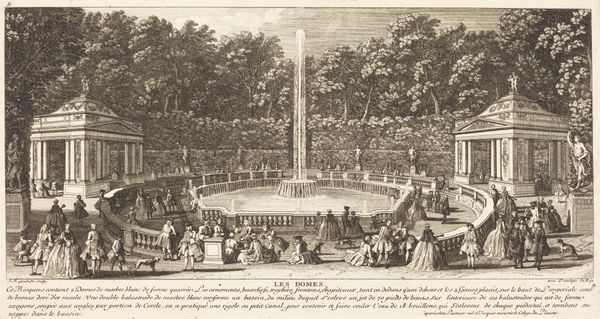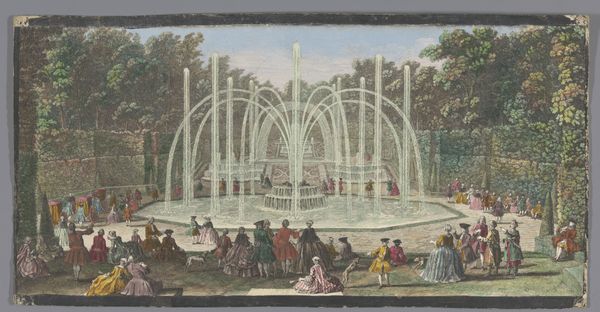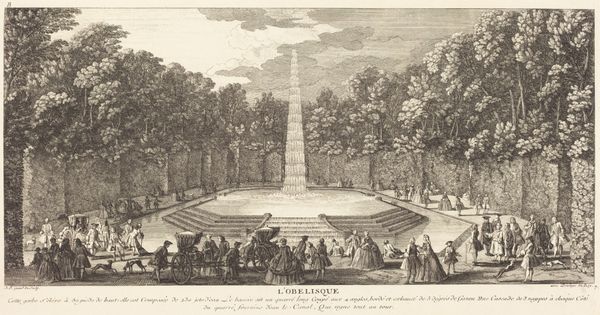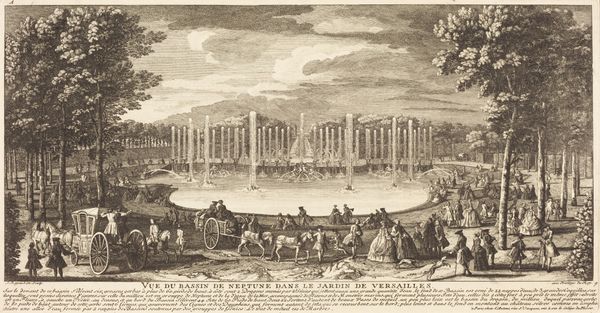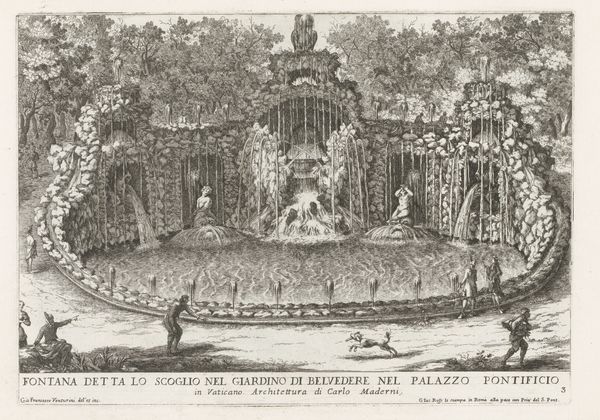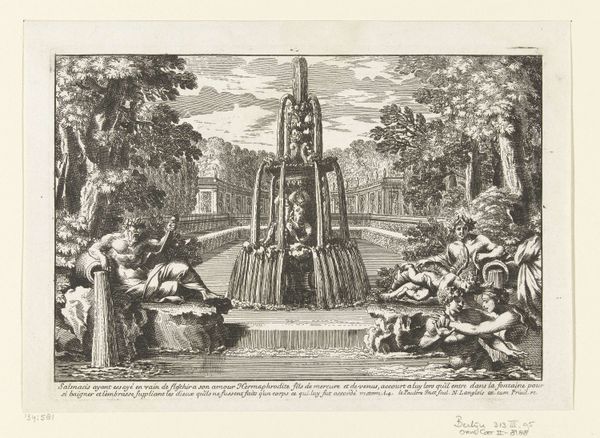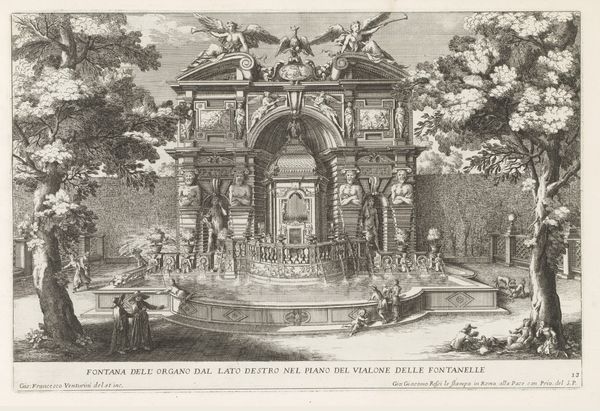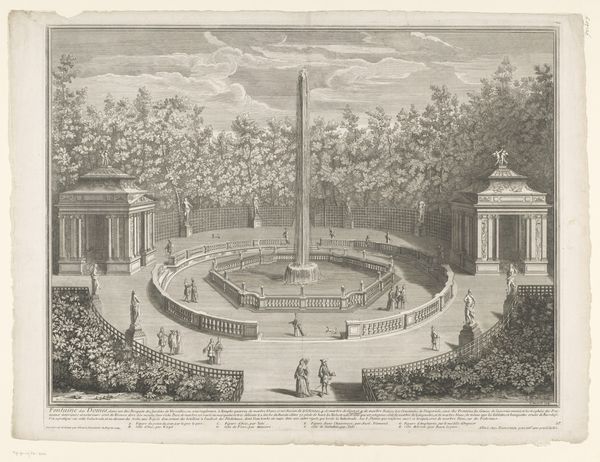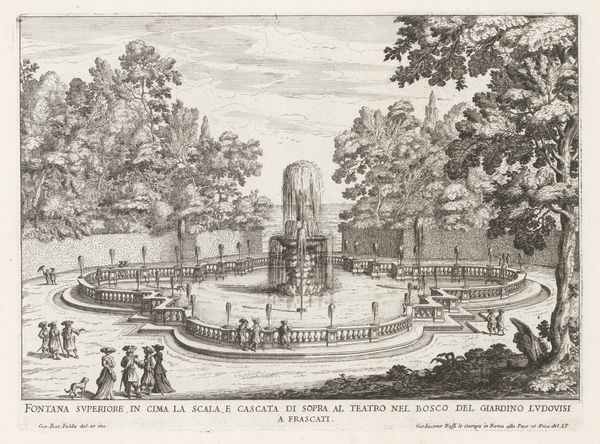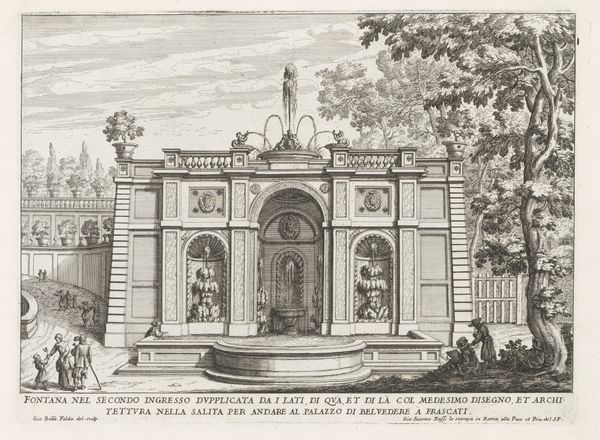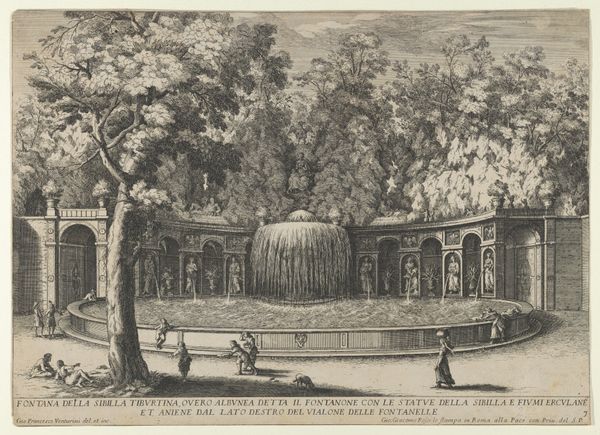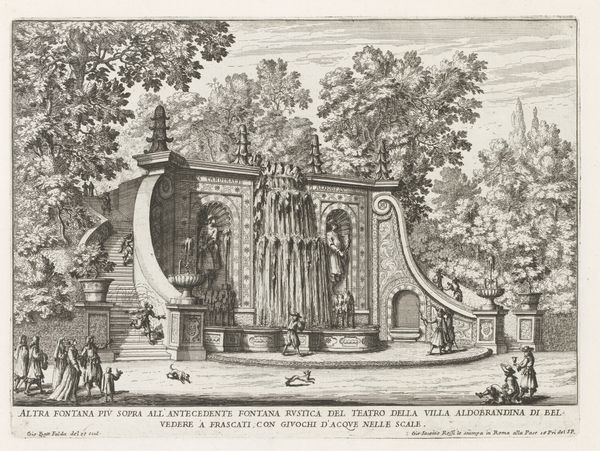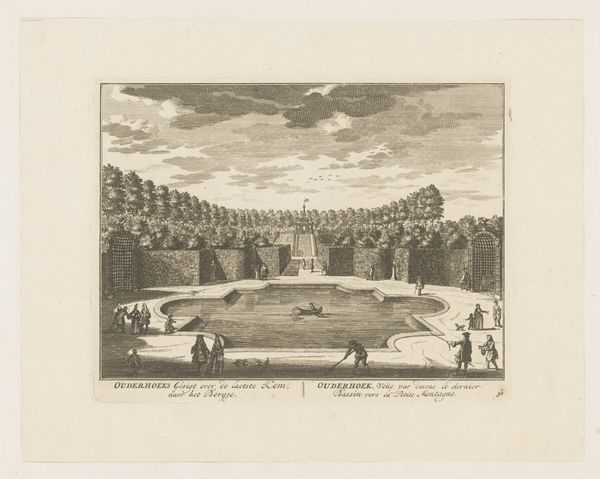
print, engraving
#
baroque
# print
#
landscape
#
figuration
#
line
#
cityscape
#
engraving
Copyright: National Gallery of Art: CC0 1.0
Curator: Jean-Baptiste Rigaud's "Les Trois Fontaines" offers us a fascinating glimpse into the intersection of Baroque style, figuration, and landscape artistry through the medium of engraving. What is your immediate impression of the print? Editor: Well, I'm immediately struck by its sense of performance. The elaborate fountain dominates, almost staging a spectacle for the fashionable crowd gathered around. It feels artificial, even performative, capturing a specific moment of leisure and display. Curator: Precisely. Prints like this served an important public function in disseminating visual information about important urban projects and the evolving aesthetics of civic spaces. Rigaud's meticulous lines emphasize the technological marvel of the fountains themselves, highlighting a sense of control over nature so prized by the era's elite. Editor: It's difficult to ignore the exclusivity implied in the image, though. Who are these impeccably dressed figures? It screams privilege. Are they meant to represent everyone or only the societal upper crust? It makes me think about who has access to these public spaces, and more importantly, who *doesn't*. Curator: Indeed, understanding access to these meticulously designed environments is key to understanding the function of art during this period. The figures are deliberately rendered to reflect a society stratified along lines of class and status. The print then reinforces those hierarchies through its production and distribution, primarily catering to those depicted within it. Editor: It’s troubling that these power dynamics become normalized – almost celebrated – through the artistic lens. Yet, as a historical document, it opens a critical dialogue on the legacy of inequitable city planning, doesn't it? The way the clean, organized lines of the engraving contrast with the real, messy experiences of many underscores how artistic representations can reinforce societal divides. Curator: That’s a perceptive observation. In considering how artistic representations of space reflect social power, the "Les Trois Fontaines" engraving prompts further reflection on the ongoing discourse of inclusivity within the public sphere today. Editor: It makes you realize how much history is packed into even a seemingly simple landscape. The questions raised by the image are incredibly resonant with current discussions about the accessibility and democratization of public spaces.
Comments
No comments
Be the first to comment and join the conversation on the ultimate creative platform.
